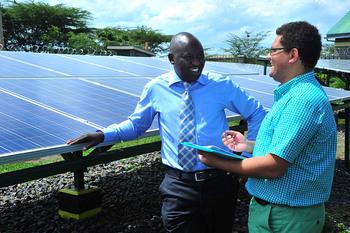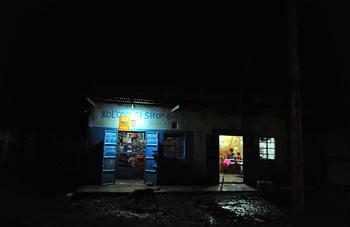Approach
The project aims to improve the overall framework, the technical expertise of government actors and the implementing capacity of private businesses for the sustainable installation and operation of climate-friendly solar-hybrid village power systems. The project operates in four areas of activity:
- Support is being provided to the government actors to develop sufficient expertise and to draw up guidelines for disseminating solar-hybrid mini-grid systems.
- The actors are being empowered to develop mechanisms for stepping up broad implementation based on the experience gained from pilot projects.
- The planning, technical and commercial skills of the private sector are being improved in order to ensure high-quality installation and operation of solar-hybrid mini-grid systems.
- Support is being provided to scale up pilot projects. The rural population is receiving training on operating and maintaining the plants.
The project benefits users in private households and small businesses in remote rural areas that the national power grid is not expected to reach in the foreseeable future.
Technical and financial cooperation are closely linked in the project, which forms part of the German Climate Technology Initiative (DKTI). Running parallel to GIZ's advisory services, KfW Development Bank is financing investment projects. In addition, the project is cooperating with Energising Development (EnDev) Kenya in implementing a results-oriented financing instrument. With funding from the UK's Department for International Development (DFID), it supports private project developers of solar-hybrid village power plants in establishing mini-grids.
Results
An advanced training course has been developed for solar technicians, qualifying them to install solar-hybrid village power systems. The technicians are trained and certified using a 10-kW training facility financed by the project at Strathmore University. Partnerships with other education institutions increase the outreach of the training courses.
The first 50-kW pilot plant has been installed and supplies solar power to a rural business centre. The regulatory authority has licensed the private project to generate and distribute electricity. It is being used to test an operating model that can be upscaled; at the same time, it is assessing the economic viability of privately run mini-grids.
A list of criteria entitled ‘Where shall we put it?’ and weighting factors to select and prioritise locations for the use of mini-grids can be used throughout the country. This was developed in cooperation with the Ministry of Energy, the Rural Electrification Authority and Kenya Power. A guidebook entitled 'How do we license it?' provides a thorough guide to the process of licensing mini-grids and shares empirical values for practical testing. Based on experience in planning a pilot plant, an online tool and a manual entitled 'What size shall it be?' have been produced. These guides help private companies and other stakeholders to estimate risks, thus assisting with planning and realising mini-grids.
The project supports the decentralisation process in various counties, for example Turkana and Marsabit. Energy sector plans are being prepared and implemented in close cooperation with the local governments, setting the course for energy planning and the use of resources. Advisory services on national guidelines for preparing energy sector plans pave the way for implementing Kenya's National Development Plan throughout the country and incorporating it in a coherent way into energy planning by the counties.


